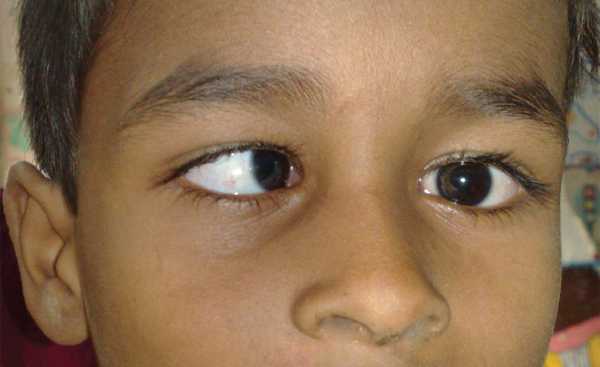WHEN YOUR CHILD HAS SQUINT EYES
Congenital deformities of the eyes may be rare but they do happen. One such deformity is strabismus commonly referred to as a squint, turned, or lazy eye. The eye is


Congenital deformities of the eyes may be rare but they do happen. One such deformity is strabismus commonly referred to as a squint, turned, or lazy eye. The eye is controlled by six muscles, which help to stabilise and move it in different directions. In the event of a squint, instead of the eyes being correctly aligned and focussing on the same direction at any given time, one eye is either turned upwards, outwards, downwards or inwards, thus facing a different direction.
Causes of squint eye
Congenital squint eyes often times become noticeable from the age of three months to three years. While the primary cause is the improper working of the eye muscles where they are misaligned or fail to work together in a balanced way, what causes the muscles to fail has not yet been established. Premature babies, those with low birth weight and those with a history of squint eyes in their family tree are more predisposed to it, though there are times when one can develop it at a later stage.
Astigmatism or an anomaly of the cornea where it is more oval shaped as opposed to being round can cause a squint eye due to focussing issues. Other causes include refractive errors or problems with the retina, for instance, short or long-sightedness. Most refractive cases tend to develop at the age of two years and are common among those with long sightedness. They often manifest in an inward looking squint, that is, the eye tends turn towards the nose. In other instances, a squint may develop in case involving brain injuries or conditions such as cerebral palsy, Down syndrome, and hydrocephalus among others.
Types of squint…
Constant squint: A squint that is present all the time.
Intermittent squint: A squint that appears and disappears from time to time.
Manifest squint: A squint that occurs when the eye is open and in use.
Latent squint: A squint that emerges when the eyes are about to be shut or covered.
Concomitant squint: A squint in which the degree or angle of the squint is always in the same direction whether up, down, inwards (towards the nose) or outwards. The eyes generally do move well and the muscles work fine, but the eyes always face different directions depending on the squint at any given time.
Incomitant squint: in this case, the angle of the squint varies and it may take on different directions at any given time and sometimes, depending from which side one looks at the patient.
Treatment…
A squint eye cannot get better without medical intervention. If your family has a history of the same, then take your children for medical check up regularly starting from the age of three. Newborns may look like they have squint eyes but this usually sorts itself out as they gain more muscle control, which happens over time and continues up to the age of seven to eight years.
If a child develops a squint after three months of age, there’s a chance they will develop a lazy eye. In this case, the child’s brain ignores the image coming from the affected eye, reducing their vision, therefore, the earlier the diagnosis and treatment, the higher the chances of correcting it.
In the event one has a lazy eye, then a corrective patch is used. The patch covers the good eye so as to force the squint eye to work. This, however, may serve to improve vision and does not guarantee the eyes will straighten. In refractive anomalies, then corrective glasses can be recommended to achieve corrective vision and sight. Where eye muscles are uncoordinated, surgery is used to lengthen or shorten the muscles and align them correctly.
April 2016





